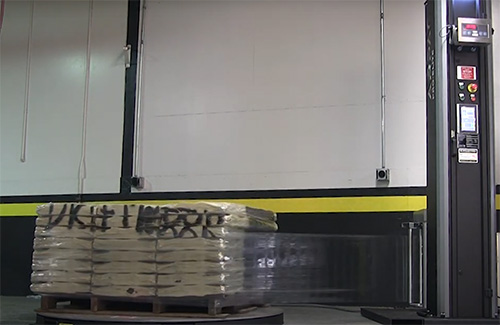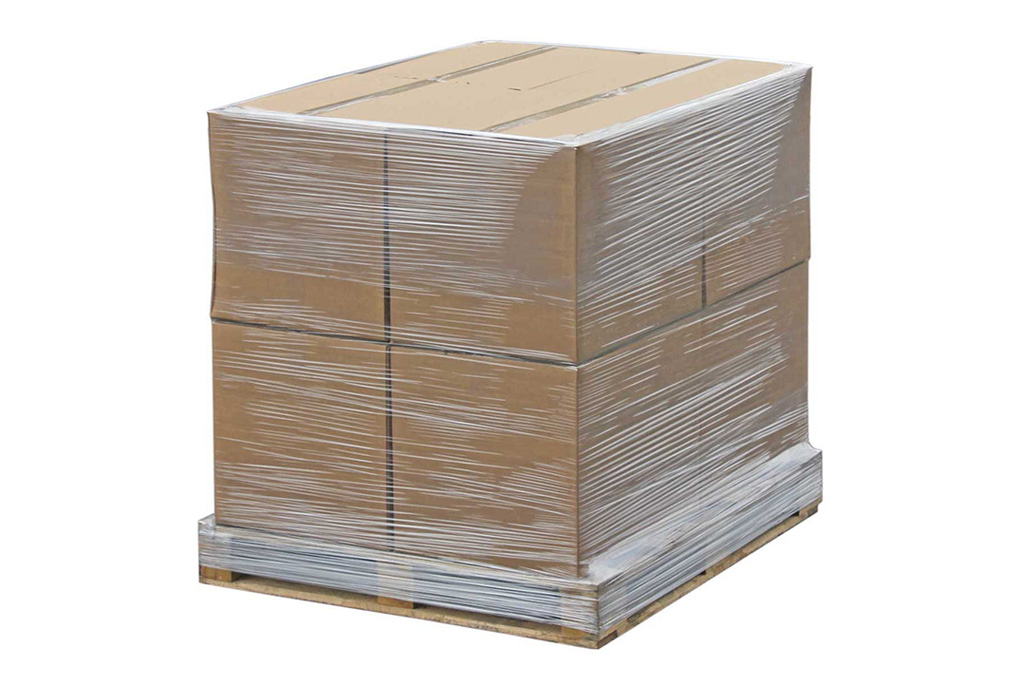Stretch Film to Fit Every Packaging Need
From an outside perspective, stretch film looks just like the plastic wrap you use in your kitchen to cover leftovers, albeit a roll large enough to encircle a pallet full of products for shipping. But not only is stretch film that’s used in shipping very different from household plastic wrap, it also comes in many varieties. Not all stretch film is the same, nor should it be.
On a basic level, stretch wrap is thin, stretchable plastic that is wrapped tightly around pallets to prevent products from moving and holds the entire load in place. Stretch film is often called shrink wrap, but the two are different. Shrink wrap is what goes around a case of bottled water while stretch film handles much bigger loads. At Supply Source, we refer to stretch film as insurance for your product, and our job is to help you find the right type to protect your product once it leaves your building, reducing your liability, while also finding you the best price.
To handle those loads that come in many different shapes and sizes, stretch film comes in many different widths, thicknesses, and types. The key to the right film or wrap product is finding the one that has the optimal stretch to protect your shifting loads, discourage tampering, and reduce product loss. We understand that damaged products can damage your bottom line. Just as the products that a pallet holds can differ dramatically, so must the stretch film that protects it.
The stretch in “stretch film” really refers to how it is applied and application is everything. For this reason, the most commonly used stretch film is machine stretched, which either uses machines that rotate the pallet or machines with a mechanical arm that rotates around the load. Both options can be automatic or semi-automatic and are chosen based on the number of loads per hour that a shipper needs to accomplish. We have some amazing partners who can help determine which machinery fits best with your packaging system. It pays to have well-functioning wrapping machines. That outdated or poor-performing equipment may save you from paying for new machines, but the potential damage to your products negates that saving.
There are different types of machine stretch films:
 Blown Stretch Film uses heated resins that are transformed into sheets that are then formed into a thin-walled tube. The process gives the film more strength and significant load-holding power. Blown stretch is a favorite for use in the agricultural industry. That extra strength, of course, means blown film costs a bit more, but the higher tear resistance may mean less chance for damage saving money in the end.
Blown Stretch Film uses heated resins that are transformed into sheets that are then formed into a thin-walled tube. The process gives the film more strength and significant load-holding power. Blown stretch is a favorite for use in the agricultural industry. That extra strength, of course, means blown film costs a bit more, but the higher tear resistance may mean less chance for damage saving money in the end.
Cast Stretch Film also uses heated resins but these are fed through a line of cooled rollers to solidify the film. Cast stretch film requires less force to stretch but offers superior cling. reduced manufacturing costs make cast stretch the less expensive option. It is most commonly found in manufacturing and distribution facilities.
Pre Stretched Film is, as the name implies, pre-stretched during the manufacturing process making it easier to work with and apply. If films are not pre-stretched, the stretching relies on machinery and manpower to reach the ideal stretch, strength, and efficiency. Pre-stretched film always delivers the optimal tension improving containment, minimizing waste, and, in the end, saving your company money.
Aside from how the film is manufactured, there are also differences in the film itself. There are a variety of specialty films that are available to meet the specific needs of the manufacturer. Let’s face it, anything and everything seems to ship today, and sending a truck full of seafood across the state or shipping a trainload of car parts from coast to coast will require drastically different wrapping. To meet those varied needs, there are specialty films.
- Color Stretch is color-coded based on how the contents should be handled, shipped, and/or stored. It can also be used to identify products for sorting and routing. Using different colored films can also aid in security. A dark-colored film prevents potential thieves from knowing what’s inside. It can also help keep the wraps on new products that haven’t yet been released to the public.
- UVI Stretch has an ultraviolet inhibitor to protect products from the sun’s harmful UV rays. It prevents colors from fading, rubber products from losing their bounce, and supple products from becoming brittle.
- VCI Stretch is corrosion inhibiting, meaning it protects parts from ambient moisture than can corrode porous materials. This keeps metals rust-free.
- Vented Stretch (or breathable) allows air circulation around the product and is most often used for items needing refrigeration. Nothing rots produce quicker than a lack of air.
- Reinforced Stretch offers high strength and puncture resistance in a thinner gauge. That broken bolt sticking out on a truck can do a lot of damage to the shipment of fine leather sofas that slides by it.
As you can see, there are many options when it comes to deciding what type of stretch film is the best packaging solution for your shipping needs. At Supply Source we are well-versed in what’s available in stretch film and we can help you determine what meets your needs and your budget. Contact us to help you put that added insurance policy around your shipments. We’re nerdy and love to talk stretch film!




Recent Comments